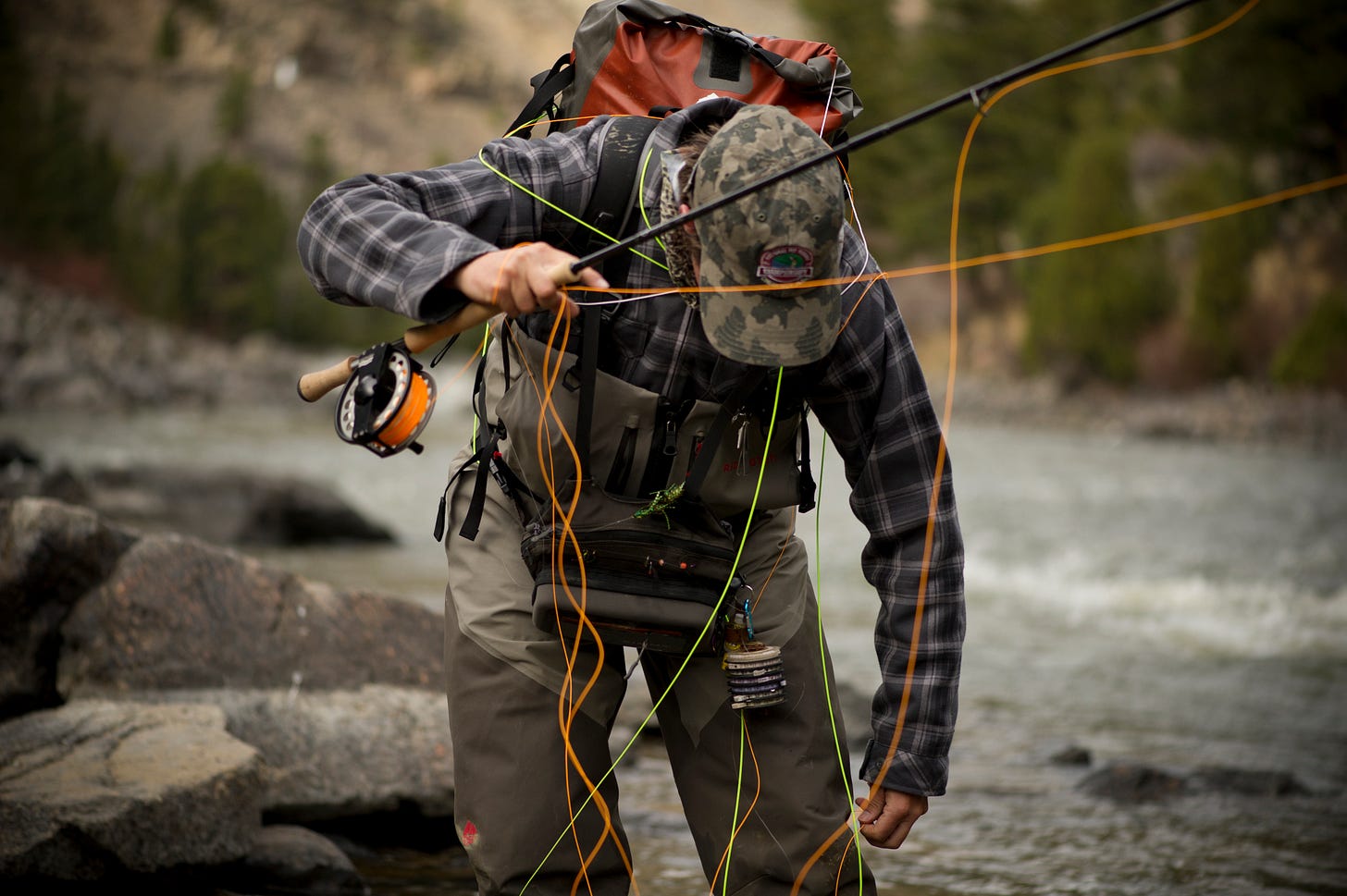Toward Better Casting
Good mechanics set us directly on the path toward complete and total control of our line, leader and fly.
By John Juracek
Let’s briefly talk golf.
If you’re a golfer (and even if you’re not), you’re likely aware that you can turn on the TV pretty much any week of the year and watch the best players in the world play the game. You get to observe the various kinds of shots they hit, you have plenty of chances to study their swings. And you can watch for hours on end, if you like. You also get to partake of professional analysis of those swings. In short, the pros show us what’s possible. From watching them we gain an understanding of what a good swing looks like, what its characteristics are–both good and bad. If we play the game ourselves, we can take what we see and hear and apply it to our own swing.
Unfortunately, there’s no parallel to this in fly casting. Even accounting for differences in the popularity of the sports, expert fly casters are much rarer than expert golfers and there are very few places you can go and observe them. Yes, if you happen to live in San Francisco, Oakland or Long Beach, California, you can visit their casting clubs and watch some great casters at work. Most of us aren’t that lucky. As for the televised fishing shows, well, they practically never feature skilled casters.
What about YouTube, that ubiquitous home to all things video? There’s no shortage of casting videos to be found there–I’ve watched many dozens of them myself. But very few that I’ve come across teach or demonstrate good mechanics, and the vast majority will harm your casting more than help. For someone seeking to improve, it’s not a good situation. It is possible to learn casting from studying books, but it’s difficult. Static images simply don’t do as good a job with the details as video or live instruction does.
So, what I find in my own teaching is that while most anglers are eager to improve their casting, they’re not at all sure what “improvement” looks like. They have no visual reference, no mental picture of a sound casting stroke, no expert resource they can go to and compare themselves against. Which is one reason many of us fish for years without showing improvement in our casting. We simply can’t develop a mechanically sound casting stroke until we’ve been shown what one looks and feels like.
The best way to learn is in person, one on one, from someone who really understands casting. In lieu of that, I’m providing a link to a video whereby you can mime the motion of a mechanically sound stroke. While the video doesn’t replicate live casting, it will allow you to see and get a basic feel for what constitutes good mechanics. You can compare what you see and feel to your current stroke and you’ll have some idea of where you stand fundamentally. If you want to pursue further improvement, you’ll have some direction for your learning.
Good mechanics set us directly on the path toward complete and total control of our line, leader and fly. Such control leads inevitably to the catching of more fish, larger fish and, ultimately, more larger fish. In addition, gaining control over our line also means reaping the pleasures inherent in the act of fly casting itself–pleasures like grace, beauty and elegance, all sources of great enjoyment on the water.
An old fly casting video from the days of Abe Lincoln to get you started.
John Juracek is a fly fisherman, writer and photographer from West Yellowstone, Montana. For twenty-some years he was a partner at Blue Ribbon Flies, a local fly shop, and is currently the head casting instructor at the School of Trout and Anglers Academy. His writing credits include Yellowstone: Photographs of an Angling Landscape, Fly Patterns of Yellowstone, Fishing Yellowstone Hatches and Fly Patterns of Yellowstone, Volume Two.
He is considered one of the sport’s expert fly casters and instructors and offers casting lessons for $100/hour at jjuracek@gmail.com or (406) 640-2828.




I was recently in West Yellowstone and had a private casting lesson with John. Best investment in time and $$ I’ve made in fly fishing. John’s fantastic.
Super helpful